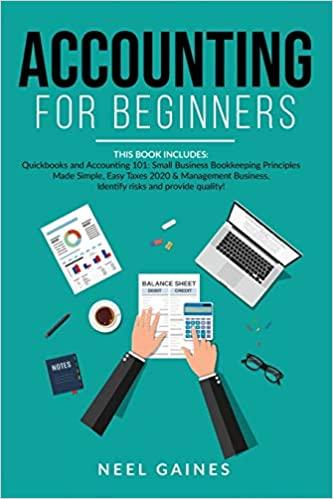Question
Multiple Regression In the McCourt Company example, fill in the blank percent of the variability in materials handling cost was explained by changes in the
Multiple Regression
In the McCourt Company example, fill in the blank percent of the variability in materials handling cost was explained by changes in the number of moves. As a result, McCourt may want to search for additional explanatory variables. For example, the weight of the items moved might be usefulparticularly if forklifts and other heavy machinery are needed for moving parts and products from one location to another.
In the case of two explanatory variables, the linear equation is expanded to include the additional variable:
Y = F + V1X1 + V2X2
where
X1 = Number of moves
X2 = Number of pounds moved
With three variables (Y, X1, X2), a minimum of three points is needed to compute the parameters F, V1, and V2. Seeing the points becomes difficult because they must be plotted in three dimensions. Using the scatterplot method or the high-low method is not practical.
However, the extension of the method of least squares is straightforward. It is relatively simple to develop a set of equations that provides values for F, V1, and V2 that yields the best-fitting equation. Whenever least squares is used to fit an equation involving two or more independent variables, the method is called multiple regression. The computations required for multiple regressions are far more complex than in simple (one independent variable) regression and any practical application of multiple regression requires use of regression software. The reliability measures are basically the same for multiple regressions as they were for a regression involving a single variable.
Applying the Concepts
The staff of controller of McCourt Company added the variable "pounds moved" to the ten-month data set:
| Month | Materials Handling Cost | Number of Moves | Pounds Moved |
| January | $5,600 | 475 | 12,000 |
| February | 3,090 | 125 | 15,000 |
| March | 2,780 | 175 | 7,800 |
| April | 8,000 | 600 | 29,000 |
| May | 1,990 | 200 | 600 |
| June | 5,300 | 300 | 23,000 |
| July | 4,300 | 250 | 17,000 |
| August | 6,300 | 400 | 25,000 |
| September | 2,000 | 100 | 6,000 |
| October | 6,240 | 425 | 22,400 |
Required:
1. Using the data on material handling, use regression software such as Microsoft Excel to complete the missing data in the table below (round regression parameters to the nearest cent and other answers to three decimal places):
| McCourt Company SUMMARY OUTPUT | |
| Regression Statistics | |
| Multiple R | 0.999 |
| R Square | fill in the blank |
| Adjusted R Square | fill in the blank |
| Standard Error | 119.600 |
| Observations | 10 |
| ANOVA | |||||
| df | SS | MS | F | Significance F | |
| Regression | 2 | 37,768,070.16 | 18,884,035 | 1,320.168 | 9.50629E-10 |
| Residual | 7 | 100,129.84 | 14,304.26 | ||
| Total | 9 | 37,868,200.00 | |||
| Coefficients | Standard Error | t Stat | P-value | |
| Intercept | fill in the blank | 86.068 | 6.863 | 0.000239 |
| X Variable 1 | fill in the blank | 0.340 | 0.340 | 9.81E-08 |
| X Variable 2 | fill in the blank | 0.006 | 17.446 | 5E-07 |
2. Using the cost equation from Requirement 1, calculate the total expected material handling cost for November if 350 moves are expected and 17,000 pounds of material will be moved (round final answer to the nearest dollar).
Expected material handling cost: $ fill in the blank
3. For the coming year, McCourt expects 3,940 moves involving a total of 204,000 pounds. Calculate the following:
Total expected fixed costs (round to the nearest dollar): $ fill in the blank Total material handling cost (add each component in the equation and then round to the nearest dollar): $ fill in the blank
Step by Step Solution
There are 3 Steps involved in it
Step: 1

Get Instant Access to Expert-Tailored Solutions
See step-by-step solutions with expert insights and AI powered tools for academic success
Step: 2

Step: 3

Ace Your Homework with AI
Get the answers you need in no time with our AI-driven, step-by-step assistance
Get Started


